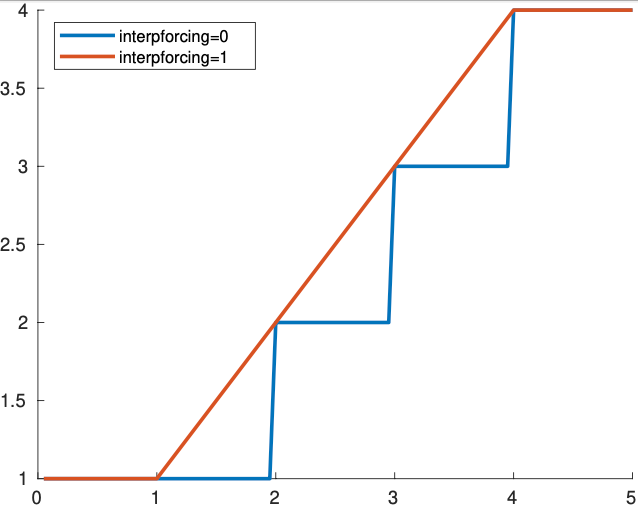that should not be the case... here is an example:
md.smb.mass_balance = repmat( [1. 2. 3. 4.],[md.mesh.numberofvertices, 1]);
md.smb.mass_balance(end+1,:) = [1. 2. 3. 4.];
md.timestepping.start_time = 0;
md.timestepping.final_time = 5;
md.timestepping.time_step = 0.5;
md.timestepping.interp_forcing = 1;
md=solve(md,'Transient');
smb = cell2mat({md.results.TransientSolution(:).SmbMassBalance});
times = [md.results.TransientSolution(:).time];
[smb(1,:); times]
will show this:
SMB: 1.0000 1.0000 1.5000 2.0000 2.5000 3.0000 3.5000 4.0000 4.0000 4.0000
TIME: 0.5000 1.0000 1.5000 2.0000 2.5000 3.0000 3.5000 4.0000 4.5000 5.0000
and if you use md.timestepping.interp_forcing = 0
SMB: 1.0000 1.0000 1.0000 2.0000 2.0000 3.0000 3.0000 4.0000 4.0000 4.0000
TIME: 0.5000 1.0000 1.5000 2.0000 2.5000 3.0000 3.5000 4.0000 4.5000 5.0000
as expected
Mathieu
